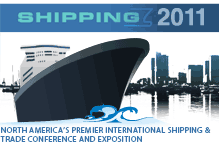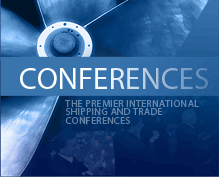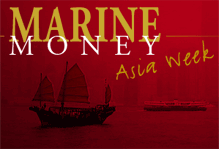
The Honor System
By Matt McCleery
Disclaimers first. At the beginning of every year, the Marine Money editors sift through our transaction database to pull together league tables and update our database of shipping bank loan portfolios – as you can appreciate, this exercise is more of an art than a science. First, there is the issue of how to define “marine” assets – does it include cruise? How about dredgers? How about container leasing? Where do we put rigs? How about OSVs? Our answer used to be “it needs to float,” but when one cheeky banker commented, “Hey Matt, marine containers float better than some ships,” we abandoned that definition and adopted a new one. Our new criteria to banks for inclusion is as follows: “if you think it belongs in Marine Money’s league tables, then we do, too.” Since most of the top shipping banks are marine money readers, we figure they should know as well as we do what fits into the universe. This is called “the honor system” when you are in school or self-service flower stands along country roads and the result is that these tables should be considered overinclusive. Using the honor system as our guide, marine finance deals total about $30 billion per year in new deals and the entire market for this variety of debt is in excess of $150 billion at any given time. In addition to defining the term “maritime transaction” we are always faced with the challenge of working with bilateral loans for non-public companies -which involve one lender, one borrower and a lot of privacy issues. Although we don’t present these deals individually, their volume is reflected in the overall portfolio table below.
Number & Size
| 2002 Syndicated Loan Volume |
Number of Deals |
| Nordea | 25 |
| DnB | 20 |
| Citibank | 8 |
| Fortis | 6 |
| ING | 11 |
| HSBC | 3 |
| JP Morgan | 3 |
| 2002 – Average | $m |
| Deal Size | |
| JP Morgan | 1100 |
| Citibank | 500 |
| HSBC | 500 |
| ING | 209 |
| DnB | 200 |
| Nordea | 192 |
| Fortis | 125 |
The goals of this exercise are to give banks a sense of market size and market share and to give shipowners an idea of who is actively originating new loans – and who isn’t. Once we have the number together, we slice and dice the data and make some assumptions about the size of the overall market for debt and equity investment and then attempt to characterize where capital for shipping is really coming from.
Hyundai Merchant Marine Raises $2.4 billion
By Matthew Flynn
The restructuring of Hyundai Merchant Marine may have been the ultimate banker’s Odyssey.
Level a mountain of debt, uproot and replant the car carrier division, tender the container terminals to the giants of the port industry, and disentangle the company from shareholdings with other struggling affiliates. For good measure, sell the roof over the company’s head with the disposal of its headquarter’s building, then do a handful of asset-backed security issues on LNG freight receivables.
At the same time, avoid the sniping from politicians determined to find proof the company illegally transferred funds to North Korea. This history of the company’s involvement with the Hyundai Group’s campaign in North Korea is hard to ignore because it appears to be both the undoing of HMM’s financial security and the source of its current regulatory problems.
Against this backdrop, HMM and their advisors, Credit Suisse First Boston, pulled off one of the most substantial and successful shipping restructuring perhaps in several decades.
Added Value of SWISSMARINE
By Kevin Oates
Being a shipowner these days is not only about operating ships and playing the asset game – buying cheap and selling expensive. The modern-day, sophisticated shipping company wants a bit more than this – it wants to control or rather manoeuvre the operating risk either by locking into long-term employment arrangements with quality charterers or better still control the cargos the ships will carry. However it is not the expertise sector of the shipowner to negotiate, control and activate these cargo contracts and Contracts of Affreightments which are in the hands of only a few major commodity traders.
If you have been working for a number of years, together with colleagues, with a major commodity trading house for which you have made a lot of earnings, but you feel trapped by the inflexibility of the organisation, and perhaps frustrated by the confinements of personal reward, then why not take the experience and contacts to a new principal who will re-write the rules of engagement.
Bring the sophisticated shipowners and operators and the experienced manpower together and what do we have – SWISSMARINE Services SA. Set up in early 2001 Swissmarine is a company majority owned by a shipowning group, and staffed exclusively by experienced commodity traders. The result being that in nine months of 2001 over 17 million tonnes of cargo was shifted, in 2002 over 39 million tonnes and in 2003 the target is over 50 million tonnes.
NYSE Tankers Raise $1.64b 60 Days! (AET to come?)
By Urs Dür
The title depicts what was announced between mid-December 2002 and mid February 2003. It is a deceiving title but we had to catch your eye. Firstly it’s deceiving since much of what was announced has been long in development and/or is yet to be finalized. Secondly, and probably most importantly, it’s deceptive because the fundraising and acquisitions are not done yet, nor in our humble estimation, likely by a long shot.
Of course what we are referring to is Teekay’s (NYSE: TK) $800m acquisition of Navion in December and their $1 44m sub-debt convertible equity (PEP) announced and priced on Febrauay11th. We are also referring to General Maritime’s (NYSE: GMR) $525m acquisition of Metrostar’s existing assets at the end of January and Stelmar’s (NYSE: SJH) $177m purchase of Comninos’ controlled Target Marine’s 6 MR new- buildings on 10th February. The amount raised by these transactions in this period is approximately $1 .64billion, give or take a few million on the variables. The combined tonnage of the tanker deals – which have attributes that effect four different sectors of the tanker market including shuttle tankers, suezmax, aframax and product tankers – is about 4.05 million tonnes not including the chartered-in tonnage of Navion and its associated franchise value for TK. But these are anecdotal figures for the sake of measurement of scope, lets have some fun people!
Equally interesting is what has yet to happen. Most notably the quest to sell, on the part of Singapore listed Neptune Orient Lines (NOL), American Eagle Tankers (AET) is ongoing amidst what has become the soap opera backdrop of NOL’s trials and tribulations of massive losses in the non tanker sectors and the upheaval in its management. No less than five companies; Teekay, General Maritime, Overseas Shipholding Group (NYSE: OSG), Tsakos Energy Navigation (NYSE: TNP), Stena and Malaysian national carrier MISC are in the running for this $750m, 3m ton (or, as we say with a smile, $250/ton purchase). Most readers know that the potential sale of AET has been going on for years like a bad serial soap opera, but with the recent regime change within NOL combined with its massive losses and a good tanker market, we think that AET can be done this year and is likely done sooner rather than later.
A Public Sinotrans
By Matt Flynn
Investors have embraced the listing of Sinotrans Ltd. as a proxy for the bonafide exuberance of mainland Chinese cargo growth, while in turn the mainland logistics firm sees the discipline of a stock market listing as an avenue to greater corporate efficiency. The China dream so very often embraced by fortune seekers has a tangible vehicle in trade growth, which has exceeded 30%. This rate across all cargoes will likely slow, but would still easily achieve 15%, or about twice the global average. The stock market reception from investors has been strong, but not exuberant and this may be exactly what Sinotrans Ltd needs. In the months before the listing, a senior Sinotrans executive in Hong Kong told this correspondent that the most important feature of getting the company hammered into shape for a stock market listing was the simple performance benchmark from the earnings statements. This would drive the restructuring into a more streamlined and profit oriented corporation ready to face the onslaught of competition unleashed by World Trade Organisation ascension.
The greatest challenge facing China’s large state owned enterprises is getting the far flung offices to use the regional resources to the best benefit of the head office. COSCO and China Shipping have both gone through this process and although much of Sinotrans’ less productive inland offices and warehousing has been stripped out, now it is Sinotrans’ turn to reverse the commercial devolution and fragmentation inherent in a matured socialist business structure.
In other words, the market gets what it wants in terms of a plausible China play, while Sinotrans enjoys the self-discipline demanded by Western style corporate accounting.
SOH MEN TURNING JAPANESE?
World-Wide Shipping’s Dr. Helmut Sohmen has pulled yet another stealth share acquisition, this time in Japan. The Hong Kong-headquartered company has acquired a more than 6% stake in Tokyo-listed Iino Kaiun, an old-line industrial carrier with interests in LNG, LPG, VLCCs, smaller tankers and a smattering of bulk carriers. With about 1 00m shares in circulation, the 6% stake acquired in the market cost Dr. Sohmen an estimated USD 10 – 13m.
So far, what we see is that World-Wide is looking at a tie up in kind of an alliance. It is not their intention to pursue a merger, said one official at Iino Line. “Right now their share is so small that we do not see that there would be any immediate impact on our business,” he added. IiWhat claim on assets Dr Sohmen received in return is unclear because the company’s fleet list does not specify Iino Line’s share of 11 LNG carriers. LNG was believed to be a prime attraction of World-Wide’s accumulation of 10% Bergesen shares.
Other Iino Line ships include 14 bulk carriers, eight LPG carriers of 2700 to 80,000 cbm, 15 chemical carriers, and five methanol carriers. Altogether the company claims to hold 78 vessels totaling 2.97m dwt.
STOLT, ODFJELL-JO, THREE MEN IN A TUB…OF?
In a scathing article on today’s front page of one of the world’s most trusted and largest newspapers, The Wall Street Journal indicted, publicly, the two largest chemical carriers in the world, Stolt Nielsen SA (OSE: SNI, NASDAQ: SNSA) and Odfjell ASA (OSE: ODF, ODFB) for collusion.
Yesterday and today Odfjell announced it was aware that it was being investigated by the EU and, in parallel by the US Department of Justice and announced clearly that it would cooperate fully with the investigation. Stolt acknowledged the same and stated clearly that it too would cooperate fully with the investigation. MARINE MONEY has been on the horn all day with people speculating about the investigation and it’s really a fruitless exercise.
At this time no one knows the depth of the investigation or what penalties might be incurred if both or either are found to be in breach of the law. However, if the information that the Wall Street Journal printed is indeed true and there is no exculpatory evidence, Odfjell, Stolt-Nielsen and Jo Tankers, also named in the EU probe, are likely in some hot water.
Oslo’s Elegant Private Equity Market
By Matt McCleery
|
Jan-Erik Dyvi AS |
Dyvi is a privately owned shipping and investment group established in 1955 with shipping activities focusing on ownership and management of car carriers. Jan-Erik Dyvi AS is the management company of the Dyvi group. The car carriers in the fleet are on long-term charter to first- class operators like Volkswagen Transport GmbH, NYK and Mitsui OSK Line.
Dyvi has extensive experience in contracting and running various vessel types like car carriers, bulkers, heavylift vessels and offshore units. Car carriers have been a focal point since the 1 960ies when Dyvi developed and contracted the world’s first pure car carrier (PC C).
Presently Dyvi has owning interests and manages the following ships:
Name Shiptype Built
“DYVI PAMPLONA” PCTC 2000
“DYVI PUEBLA” PCTC 1999
“KASSEL” PCTC 1999
“DYVI BALTIC” PCTC 1989
“WOLFSBURG” PCTC 1988
“DYVI KATTEGAT” PCC 1973
“BLUE MARLIN” Heavylift 2000
“BLACK MARLIN” Heavylift 1999
“TOR SCANDIA” RORO 1981
“TOR FLANDIRIA” RORO 1981
C alling all CFOs! The Norwegian KS market, given up for dead when most of the tax benefits for investors were eliminated in 1992, has quietly become the blue water shipping industry’s second most efficient market for raising private equity. Like most financial bubbles, the KS market ended badly, but the boom years left behind a positive legacy – they spawned a community of professional arrangers with an understanding of how to effectively structure shipping deals and a Roladex of educated investors with an appetite for shipping risk. The result of this combination is that private equity deals are getting done relatively quickly in Norway these days – for both asset play and yield – and we suspect a similar market will sprout up in Germany when tax benefits conferred upon KG investors are eliminated.
COSCO’s COMPLEXITY REVEALED
By Matt Flynn
HONG KONG – China. Ocean Shipping (Group) Co. is a masterpiece of financial complexity befitting a sprawling 540- ship company with 20m dwt in tonnage and 80,000 employees. The funding logic is shaping up to both greater off-balance sheet financing and continued aspirations for public listings. Most important for international bankers is the increasing access to funds from the domestic financial markets, despite the most recent string of five postPanamax containerships done on an off balance sheet function. The domestic market however has also been helpful with an award- winning domestic bond issue, a new Shanghai-listed unit and the early 2002 refinancing of a $600m overseas debt by domestic banks.
Bankers also believe that the country’s first two LNG ships of which COSCO will hold a part will be mostly financed by mainland banks.” There is a tremendous liquidity among the mainland banks looking for places to put their money. We can see that deals are being done at rates that foreign banks could not consider,” said one banking source in Hong Kong. The financing for the two vessels in the Guangdong LNG project is expected to be advised by Japan’s Sumitomo-Mitsui Banking Corp.
Spreads for domestic deals are dipping below even the 80 bp mark, even better than the 100 bp rate that COSCO could usually enjoy for its overseas fundraisings. “This type of thing is too close to the cost of capital and no one is willing to lock in their balance sheet for that long,” commented the banker.
Shipping and the Landesbank
By Urs Dür
In 2005, the German state banks, Landesbanks (LB), will lose their state guaranteed loan collateralization thus making likely marked changes in their overall operating strategy because of the likely loss of their ‘AAA’/'AA’ ratings and their endeavor to compensate for such. The maintenance obligation and the statutory guarantees that are currently in place will be maintained until July 18th 2005 and the Landesbanks can and will issue debt under the current guaranteed regime until then but after that, its anyone’s guess. Therefore the preliminary conclusion of this piece is that for the moment, the only conclusion regarding issues for shipping finance and the changes coming in the Landesbank regime is “wait and see”. However there are some very serious and interesting considerations for shipping finance to have in mind while this scenario plays out.
BUSINESS MOD – ELS, FUNDING, PRO FITIBILITY TO CHANGE
Currently, Landesbanks are suffering from weak core profitability and capital levels which are further aggravated by rising loan-loss provisions in the wake of the difficult economic environment. Diversification of income by merging with retail savings operations is one proposed way to improve profitability. In the past, conflicting interests in the ownership structures between the Landesbanks and the retail savings institutions in Germany have created different strategies, risk appetites and rivalries that have prevented closer cooperation. It is highly likely this will have to change in order for the Landesbanks to remain competitive in the international shipping arena. Private German investment banks already under-price the Landesbanks so integration with non-internationally based revenue retail banks in Germany is one way to change the competitive structure.







